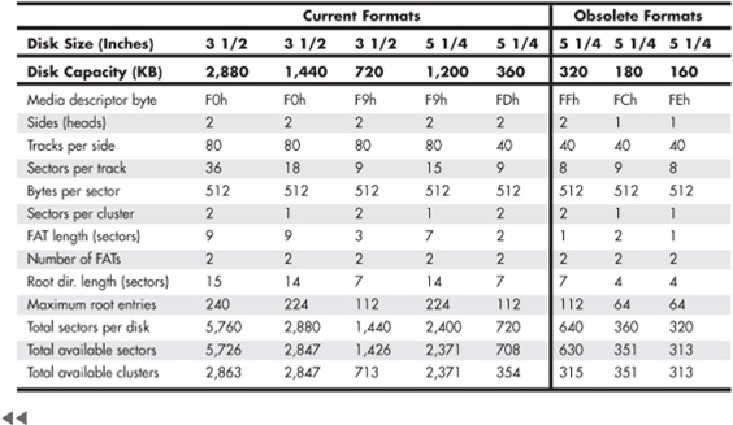Hardware Reference
In-Depth Information
Sony introduced the first 3 1/2-inch microfloppy drives and disks in 1981. The first sig-
nificant company to adopt the 3 1/2-inch floppy for general use was Hewlett-Packard in
1984 with its partially PC-compatible HP-150 system. The adoption of the 3 1/2-inch
drive in the PC was solidified when IBM started using the drive in 1986 in some systems
and finally switched its entire PC product line to 3 1/2-inch drives in 1987.
In 2002, many companies started selling systems without floppy drives. This started with
laptop computers, where internal floppy drives were first eliminated and replaced with
external (normally USB) drives. Most newer laptops no longer include a floppy drive
with the system, offering only external USB models as an option. Starting in 2003, many
desktop system manufacturers likewise stopped including floppy drives in their standard
system configurations. An optional USB floppy drive can be used as a bootable drive if
the BIOS permits it, as is the case with most recent systems.
Table 10.4
provides a brief comparison of these drives to each other. As you can see, the
different disk capacities are determined by several parameters, some of which seem to re-
mainconstantonalldrives.Others,however,changefromdrivetodrive.Forexample,all
drives use 512-byte physical sectors, which is true for hard disks as well.
Table 10.4 Floppy Disk Logical Formatted Parameters
For information on magnetic storage in general—that is, how data is actually stored
on the disk media—
see
Chapter 8
,
“
Magnetic Storage Principles
,”
p.
421
.
Although increasingly rare, floppy drives remain useful for data recovery and computer
forensics, where data retrieval from older media is often necessary. Even though I don't

